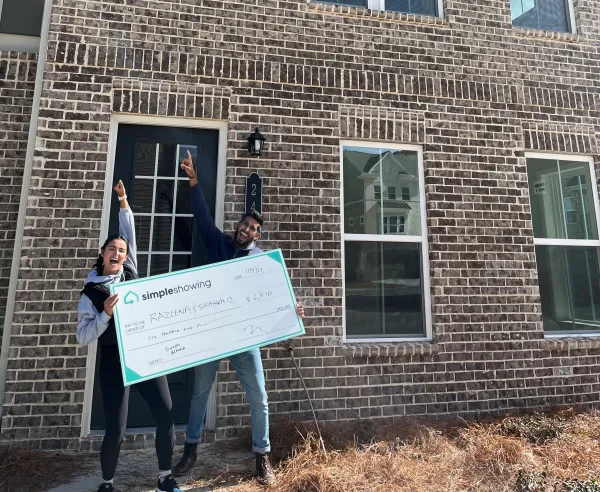When you own a home, your mortgage payment will likely be the largest expense you have each month.
Unless you pay cash, most mortgage loans will last either 15 or 30 years which means you'll be on the hook for this payment for a long time.
If your mortgage payment ends up being too large and you're struggling to make the payments, then you'll likely need to considering selling your home or finding a way to lower your monthly mortgage payments.
Luckily, there are steps you can take before buying a home, and even after, to prevent getting into a stressful situation where you aren’t able to live comfortably or accomplish your other financial goals, like savings for the future or your child’s college fund.
Here are some tips to help you lower your monthly mortgage payment.
4 Steps to Lower Your Mortgage Payment Before You Buy A Home
There’s no better time to find ways to lower your monthly mortgage payment than before you actually close on a home. Below, we've listed 4 ways to lower this payment before you sign on the dotted line.
1. Improve your credit score
Your credit score is one of the most important factors a lender will look at to determine the interest rate you will pay for your home. The lower your credit score, the higher your interest rate and the higher your monthly payment will be. So, before you start looking for a home, you should take all the necessary steps you can to improve your credit score.
If your credit score could use some help, you should make sure to pay your bills on time, try to reduce your balances on any credit cards and pay off as much of your debt as possible.
Completing these tasks before applying for a loan can help you qualify for a lower interest rate, effectively lowering your monthly mortgage payment.
2. Make a larger down payment
When getting a loan, the less money you borrow, the less you will have to pay back and the lower your mortgage payment can be.
In order to borrow less money from the bank, you will need to make a bigger down payment. The best way to afford a larger down payment is to be proactive and start saving ahead of time.
A larger down payment can help you qualify for a lower interest rate on your loan which will lower your monthly mortgage payment and save you thousands over the life of your loan.
3. Reduce your mortgage insurance
If you can pay at least 20% as a down payment on your home, then you can also avoid paying for private mortgage insurance, which can add hundreds, if not thousands each year to your mortgage payment.
Private mortgage insurance is required by most lenders when you put down less than 20% to protect them in case you default on your loan.
If you can’t manage that 20% down payment, then you will most-likely be required to pay some sort of private mortgage insurance.
While the typical option would be to add that monthly premium to your monthly mortgage payment, there are other ways to pay so that you can still lower your monthly out-of-pocket expenses.
If the seller is paying any closing costs, you may be able to negotiate having them pay part or all of the private mortgage insurance in one lump sum at closing.
You also have the option of paying the entire premium at closing yourself, so you won’t have that expense added to your monthly mortgage payment.
With all of the costs of closing on a home, if you aren’t able to afford paying the entire premium upfront, you can also pay one lump sum toward your private mortgage insurance and end up with a smaller monthly premium.
4. Buy discount points
Another way to get a lower interest rate on your loan and ultimately lower your mortgage payment is to buy discount points from your lender.
Mortgage discount points are an upfront fee paid at the time of closing in order to lower your interest rate. Each point is equal to 1% of the loan amount. So if your loan amount is $350,000, one point would cost you $3,500. With each discount point you purchase, you should see a reduction of at least 0.25% in your interest rate, maybe even more. Although this requires more money upfront, a decrease in your interest rate will effectively lower your monthly mortgage payment.
How to Lower Your Monthly Payment After You Already Have a Mortgage
1. Refinance your mortgage to a lower rate
Refinancing your mortgage is when you take out a new mortgage to replace your current mortgage. Refinancing your home to a lower interest rate is one way to lower your monthly mortgage payment. But is it worth it for you?
If you took out a conventional loan, you may be able to refinance, but you will have to qualify for a lower interest rate.
You should also consider whether it is worth it to you to refinance. To decide this, consider the age of your loan and the difference between your current interest rate and the rate you could potentially qualify for.
It is traditionally believed that if you can lower your interest rate by 1%, the benefit will outweigh the cost of refinancing.
2. Refinance to a Longer Term
Another way to lower your monthly mortgage payment is to refinance your home loan into another 30-year mortgage.
Let’s say you have a 30-year mortgage on your home and you have been making regular payments for 7 years. With a new 30-year mortgage, that smaller balance would be spread out over 30 years and result in a lower monthly mortgage payment.
As with any new loan, there will be closing costs, lender and attorney fees, and you will be paying interest for those years added to the life of your loan. Before you decide to go this route, consider those things to be sure this is the best option for you to lower your monthly mortgage payment. While this option saves you money each month now, it will end up costing more in the long run.
3. Recast Your Loan
Another way to lower your monthly mortgage payment is to re-amortize or recast your current mortgage.
To recast your mortgage, you will contribute a lump sum upfront to pay off part of your current mortgage. The remaining balance will then be spread out over the remaining term of your existing loan. The interest rate and the term of your loan don’t change, but the monthly payment will be reduced as the principal balance has been reduced by the lump sum payment.
Another benefit of recasting your loan is that you won’t have to pay the larger fees and costs of refinancing. There may be a small fee of $250-500 for recasting. Talk with your lender to make sure your loan qualifies for this method of lowering your monthly mortgage payment.
4. Apply for a Loan Modification
While loan recasting is for those who have extra funds to pay off their mortgage, loan modification is for those who are struggling to make their current monthly payments.
A loan modification helps borrowers who cannot continue making their mortgage payment due to financial hardship, such as losing a job or a medical emergency.
In a loan modification, the lender will restructure the loan in some way to lower the monthly payment. This is more of a long-term fix than a mortgage forbearance as it permanently changes the terms of your loan. Examples of possible modifications could be lowering your interest rate or extending your repayment period. Loan modification is a great way to lower your monthly mortgage payment if you have experienced a financial hardship.
5. Cancel The Mortgage Insurance
If you weren’t able to make that 20% down payment when you bought your home, you may still be paying for private mortgage insurance, which can add substantially to your monthly mortgage payment.
You don’t have to pay for private mortgage insurance forever though. Once you have paid off 20% of your home’s value, you can cancel your PMI. And if your home increases in value, your equity in the home will rise also.
Contact your lender to find out how you can cancel your private mortgage insurance. The lender may send an appraiser to inspect your home to determine the value before allowing you to cancel.
You may also have to refinance to a conventional loan in order to drop the private mortgage insurance. Eliminating your mortgage insurance premium will help lower your monthly payment.
6. Appeal Your Property Taxes
If you have an escrow account, you are probably paying your property taxes as part of your monthly mortgage payment. Your property taxes are based on your county’s tax assessment of how much your home and land are worth.
According to the National Taxpayers Union, between 30-60% of U.S. homes are over-assessed, which means that the majority of U.S. homeowners are paying too much property tax.
If your property is overvalued, you could be paying too much in property taxes. This assessment is not the same as an appraisal since it is conducted by the actual county for tax purposes only.
You can find the assessed value of your property on your tax bill or by visiting your county’s recording office. If you think your home is overvalued, you can request to have the assessment done again or appeal it by filing with your local tax board. You should be prepared to defend your appeal with evidence of error in square footage, zoning, or amenities.
If you believe your home is simply not worth the assigned assessed value, come prepared with a list of recently sold comparable homes in your area. You could also provide an appraisal if you have had one done.
A reduction in assessed value will lower your property taxes and therefore lower your monthly mortgage payment as well.
There are many ways to lower your monthly mortgage payment. Consider the pros and cons of each and how they can benefit your specific situation.
Connect With A SimpleShowing Agent To Save Even More
If you are looking for ways to lower your monthly mortgage before buying a home, consider working with one of our licensed SimpleShowing agents and learn how you can save even more with our Buyer’s refund program.
When you buy a home with SimpleShowing, we'll give you $5,000 on average towards your closing costs which can help lower your total upfront expenses.
Ready to get out of a mortgage you can’t afford? Our agents can help sell your home and save you thousands with our 1% listing fee. Request a free home valuation to get started.
Conclusion
Managing your monthly mortgage payments is indeed a combination of several key factors including a keen understanding of your homeowners' insurance, loan balance, and the characteristics of different loan types like FHA loans. Remember, each piece plays a significant role in the total amount you're obligated to pay.
For example, the FHA mortgage insurance premium attached to your FHA loan, mandated by the Federal Housing Administration, can significantly impact your total loan cost. However, once you gain a certain amount of equity in your home, you can consider refinancing to remove this premium. It's always advisable to discuss such options with your mortgage lender who can guide you with expertise and consideration of your financial situation.
Equally important to consider are aspects such as your loan term and your property tax bill, both of which can have a sizeable impact on your payments. Understanding how much equity you have in your home can also unlock various strategies to lower your monthly payment, like refinancing to a longer loan term.
It's key to remember that any changes made to your loan term or any additional fees should be considered in the context of your long-term financial plan. It is certainly possible to lower your monthly mortgage payment, but it requires a careful and strategic approach. So, be proactive, educate yourself, and take control of your mortgage payments today.






